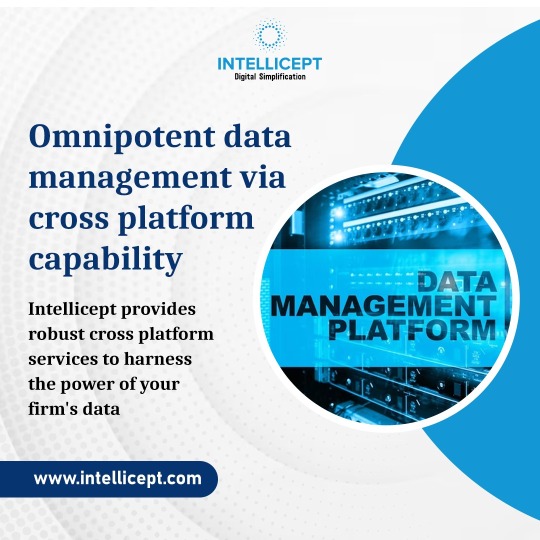#TimeToMarket
Text

Learn how the strategic use of test automation development services may drastically shorten time-to-market in Agile situations. This detailed case study explores the challenges, solutions, and the results, showcasing the transformative power of automation in streamlining processes:https://shorturl.at/npgJg
#TestAutomation#AgileDevelopment#TimeToMarket#SoftwareTesting#QualityAssurance#AgileMethodology#DevOps#ContinuousIntegration#Software Testing Companies in India#Software Testing Services in India#Test Automation Development Services#Test Automation Services#Performance testing services#Load testing services#Performance and Load Testing Services#Software Performance Testing Services#Functional Testing Services#Globalization Testing services#Globalization Testing Company#Accessibility testing services
Agile Testing Services#Mobile Testing Services#Mobile Apps Testing Services#ecommerce performance testing#ecommerce load testing#load and performance testing services#performance testing solutions#product performance testing#application performance testing services#software testing startups#benefits of load testing
0 notes
Text
Design for Manufacturability: Optimizing Product Development for Efficient Production

In the intricate process of product development, the concept of “Design for Manufacturability” (DFM) takes center stage. DFM represents a strategic approach to design that prioritizes the ease, efficiency, and cost-effectiveness of the manufacturing process. This comprehensive exploration dives into the nuances of Design for Manufacturability, examining its definition, key principles, benefits, and the profound impact it has on streamlining production and enhancing the overall success of a product.
Defining Design for Manufacturability
1. Definition of Design for Manufacturability
Design for Manufacturability is an engineering and design philosophy that focuses on creating product designs that are optimized for efficient and cost-effective manufacturing processes. It involves considering manufacturing constraints, materials and processes early in the design phase to streamline production and enhance the overall manufacturability of the product.
2. Key Principles of Design for Manufacturability:

Simplicity: Keeping designs simple and minimizing complexity facilitates easier manufacturing processes, reduces the risk of errors, and enhances overall production efficiency.
Material Selection: Choosing materials that are readily available, cost-effective, and suitable for the intended manufacturing processes is a key consideration in DFM.
Standardization: Standardizing components and manufacturing processes wherever possible helps in reducing production variation and optimizing resource utilization.
Modularity: Designing products with modular components allows for easier assembly, maintenance, and potential upgrades during the product lifecycle.
Ease of Assembly: Considering ease of assembly in the design phase reduces assembly time and lowers production costs.
Benefits of Design for Manufacturability
1. Cost Reduction
DFM contributes to significant cost savings by minimizing material waste, reducing production errors, and streamlining manufacturing processes. Efficient designs lead to lower production costs, contributing to a more competitive product in the market.
2. Faster Time-to-Market
Optimizing designs for manufacturability accelerates the entire product development cycle. With reduced complexities and efficient manufacturing processes, products can reach the market faster, allowing companies to capitalize on opportunities and stay ahead of the competition.
3. Improved Quality and Reliability
By focusing on manufacturability, designers can identify potential issues early in the design phase, leading to improved product quality and reliability. Addressing manufacturing challenges proactively reduces the likelihood of defects and enhances the overall performance of the product.
4. Enhanced Collaboration Across Teams
DFM promotes collaboration between design, engineering, and manufacturing teams. By involving manufacturing expertise early in the design process, cross-functional teams can work collaboratively to optimize designs for efficient production.
5. Reduced Environmental Impact
Efficient designs result in reduced material waste and energy consumption during manufacturing. DFM aligns with sustainable practices, contributing to a more environmentally friendly approach to product development.
6. Customization and Flexibility

DFM allows for greater flexibility in manufacturing, making it easier to customize products to meet specific customer requirements. This adaptability is essential in today’s dynamic market where customer preferences and demands constantly evolve.
7. Minimized Production Risks
Identifying and addressing potential manufacturing challenges early in the design phase minimizes risks associated with production. By understanding the limitations and capabilities of manufacturing processes, designers can make informed decisions that mitigate risks.
Impact of Design for Manufacturability on Various Industries
1. Electronics and Consumer Goods
In industries producing electronics and consumer goods, DFM is crucial for designing products that are not only aesthetically appealing but also easily manufacturable. Efficient designs contribute to the production of smaller, lighter, and more feature-rich devices.
2. Automotive Industry
DFM plays a pivotal role in the automotive sector by optimizing vehicle designs for efficient manufacturing. Standardizing components, ensuring ease of assembly, and minimizing complexities contribute to the production of reliable and cost-effective vehicles.
3. Medical Devices
In the medical device industry, where precision and reliability are paramount, DFM is essential. Designing medical devices with manufacturability in mind ensures the production of high-quality, safe, and compliant products.
4. Aerospace and Defense
The aerospace and defense industries benefit from DFM by optimizing the design of complex components and structures. Designing for manufacturability enhances the efficiency of manufacturing processes in the production of aircraft, spacecraft, and defense systems.
5. Consumer Electronics
The consumer electronics sector relies heavily on DFM to create sleek, innovative, and cost-effective devices. Optimizing designs for efficient manufacturing enables companies to stay competitive in a rapidly evolving market.
Strategies for Successful Implementation
1. Cross-functional collaboration
Encourage collaboration between design, engineering, and manufacturing teams. By fostering open communication and involving manufacturing expertise early in the design process, companies can identify and address manufacturability challenges effectively.
2. Early Design Reviews
Conducting thorough design reviews at an early stage allows teams to identify potential manufacturability issues. Early detection enables adjustments to be made before the design is finalized, reducing the likelihood of costly changes later in the process.
3. Utilize Design Software and Simulation Tools
Leverage advanced design software and simulation tools to model and analyze the manufacturability of product designs. These tools provide valuable insights into potential challenges and opportunities for optimization.
4. Standardization of Components
Standardizing components and processes where possible simplifies manufacturing and reduces costs. Using standardized components also enhances supply chain efficiency.
5. Prototyping and Testing

Prototyping and testing allow teams to validate the manufacturability of a design before mass production begins. Testing prototypes helps identify any unforeseen challenges and ensures that the final product can be efficiently manufactured.
6. Continuous Improvement
Embrace a culture of continuous improvement. Regularly review and analyze manufacturing processes to identify opportunities for further optimization. Iterative improvements based on real-world manufacturing experiences contribute to ongoing efficiency gains.
7. Training and Skill Development
Invest in the training and skill development of design and manufacturing teams. Well-trained teams are better equipped to understand the intricacies of efficient manufacturing and can actively contribute to DFM initiatives.
Conclusion
emerges as a linchpin in the complex interplay between product development and efficient production. By adopting a proactive approach that prioritizes manufacturability in the design phase, organizations can reap substantial benefits, from cost reduction and faster time-to-market to improved product quality and reduced environmental impact. The impact of DFM extends across diverse industries, shaping the way products are conceptualized, designed, and brought to market.
Read More: Unleashing Agility: A Comprehensive Exploration of Flexible Manufacturing Systems
#ManufacturingEfficiency#productdevelopment#designformanufacturing#EfficientProduction#costreduction#timetomarket#QualityandReliability
0 notes
Text
Numbers speak louder than words! At Avisys, our #ManagedTesting Services not only ensure flawless software operations but also offer tangible benefits:
Save up to 25% on costs
Reduce testing workload by up to 30%
Detect 97%+ critical defects
Check out the infographic for more.
For more information: https://www.avisysservices.com/blog/what-is-managed-testing-services/

#Infographics#ManagedTestingServices#SoftwareQuality#QAandTesting#TestingCoE#AvisysTesting#SoftwareReliability#UserExperience#QualityAssurance#QA#Testing#EndToEndTesting#CostEfficiency#TimeToMarket#ContinuousIntegration#ContinuousTesting
0 notes
Text

"Discover the power of React Native development – code once, deploy everywhere. Learn how to create efficient, cross-platform apps with consistent UI/UX and native performance."
#ReactNativeDevelopment#CrossPlatformApps#CodeOnceDeployEverywhere#EfficientDevelopment#NativePerformance#AppDevelopment#UIUX#CostEffective#TimeToMarket#Scalability
0 notes
Text
Pros and Cons of Cross-Platform Mobile Applications
In today's ever-evolving digital landscape, businesses are constantly seeking ways to reach a wider audience through mobile applications. When it comes to app development, one of the key decisions to make is whether to opt for a cross-platform solution or build native applications for each platform separately. This blog post explores the pros and cons of cross-platform mobile applications, shedding light on the advantages and challenges associated with this approach.
Table of Contents
Introduction
Pros of Cross-Platform Mobile Application Development
Cost Efficiency
Code Reusability
Faster Time to Market
Cons of Cross-Platform Mobile Application Development
Limited Native Functionality
Performance Constraints
Platform Limitations
Frequently Asked Questions (FAQs)
Conclusion
Introduction
Cross-platform mobile application development refers to the practice of creating mobile apps that can run on multiple operating systems, such as iOS and Android, using a single codebase. This approach offers several advantages, but it also presents certain challenges that need to be considered before making a decision.
Pros of Cross-Platform Mobile Application Development
1. Cost Efficiency
Developing cross-platform mobile apps can be more cost-effective compared to building separate native applications for each platform. By utilizing a single codebase, developers can save time and effort, resulting in lower development and maintenance costs. This approach allows businesses to reach a broader audience without significantly increasing their budget.
2. Code Reusability
One of the significant benefits of cross-platform development is code reusability. With a shared codebase, developers can write the application logic once and use it across multiple platforms. This not only speeds up the development process but also ensures consistent functionality and user experience across different devices.
3. Faster Time to Market
Cross-platform development enables faster time to market as developers can simultaneously build and deploy the app on multiple platforms. Instead of allocating separate resources for each platform, businesses can streamline the development process and release the application sooner, gaining a competitive edge in the market.
Cons of Cross-Platform Mobile Application Development
1. Limited Native Functionality
While cross-platform development offers versatility, it may have limitations in accessing certain native features and functionalities. Some advanced device capabilities and APIs may not be readily available or fully supported in cross-platform frameworks. This could impact the overall user experience and restrict the application's potential.
2. Performance Constraints
Another consideration when opting for cross-platform development is performance. Cross-platform apps may not perform as efficiently as native apps, especially when dealing with resource-intensive tasks or complex animations. Although cross-platform frameworks have improved over time, performance can still be a concern for certain applications.
3. Platform Limitations
Each mobile platform has its own set of guidelines, design principles, and user expectations. While cross-platform development aims to provide a unified experience, it may face challenges in meeting platform-specific requirements. Achieving pixel-perfect design and seamless integration with platform-specific features can be demanding and may require additional effort.
Frequently Asked Questions (FAQs)
Q: What are the benefits of cross-platform mobile application development?
A: Cross-platform development offers cost efficiency, code reusability, and faster time to market, allowing businesses to reach a wider audience while saving resources.
Q: Are there any drawbacks to cross-platform mobile app development?
A: Yes, cross-platform development may have limitations in accessing native functionality, performance constraints, and challenges in meeting platform-specific requirements.
Conclusion
In conclusion, cross-platform mobile application development presents several advantages, such as cost efficiency, code reusability, and faster time to market. However, it also comes with certain limitations, including limited native functionality, performance constraints, and platform-specific challenges. When deciding whether to pursue a cross-platform approach, businesses need to carefully evaluate their specific requirements, budget, and target audience to make an informed choice. By weighing the pros and cons, organizations can determine the best path forward for their mobile app development endeavors.
#ProsAndCons#CrossPlatformMobileApps#AppDevelopment#CodeReusability#CostEfficiency#TimeToMarket#NativeFunctionality#PerformanceConstraints#PlatformLimitations#MobileDevelopment#CrossPlatform#AppDesign#UserExperience#BusinessSolutions
0 notes
Text
Data Analytics Turned Elementary

Let Intellicept be your one stop shop for data analytics through a plethora of potent partnerships..!
For More information: www.intellicept.com
Get Regular Updates:
➽Visit Facebook: https://www.facebook.com/intelliceptusa
➽Follow on LinkedIn: https://www.linkedin.com/company/intelliceptinc/
➽Follow on Twitter: https://twitter.com/intellicept
#Intellicept#RPA#AutomationNation#FutureOfBusiness#CuttingCosts#TimeToMarket#BusinessAutomation#InnovativeTechnology#DigitalTransformation
0 notes
Text







Accelerating Time to Market boosts business agility, fostering innovation, meeting evolving customer needs, and outpacing competitors. Swift launches not only captivate markets but also establish a resilient foundation for sustained growth. Embrace the power of timely innovation and watch your business soar! #TimeToMarket #BusinessSuccess #accelerate
0 notes
Text

🚀 Unlocking Success in MedTech: Why Time to Market is Everything! 💡
In the fast-paced world of medical technology, every step is crucial, but Time to Market reigns supreme. 🌐⏰
🛠️ Discover the challenges and strategies for seamless product delivery and success in this insightful blog post. From selecting reliable vendors to ensuring compliance and prioritizing quality, every move matters. 💻🏥
🔗 Dive into the full article: https://wi4.org/news/insights/why-time-to-market-is-everything-and-everything-is-time-to-market/ and learn how effective communication, early problem-solving, and unwavering standards can make Time to Market less of a headache. 💬✨
#MedTech #TimeToMarket #Innovation #healthcare #productinnovation
1 note
·
View note
Text
Committees: The Silent Time-to-Market Killers
📢 New Blog Post Alert!
Check out this insightful article on Agile Scrum titled "Committees: The Silent Time-to-Market Killers." It sheds light on the inefficiencies of traditional management practices and the delays caused by committees. Learn about the importance of swift collaboration, the potential loss of business opportunities, and how to streamline decision-making processes.
Don't miss out on valuable insights and practical advice from NKDAgility. They offer free consultations, professional Scrum classes, and can help your organization overcome challenges with traditional management practices.
Watch the video featured in the article to see how inefficient decision-making processes can be and how competitors can gain an advantage during that time. Reflect on your own practices and strive to be agile and responsive in seizing opportunities before they disappear.
✅ Read the full blog post here: [link](https://ift.tt/98rhydp)
If you're struggling to streamline your decision-making processes or face challenges with traditional management, reach out to NKDAgility for assistance. They have a qualified team of consultants, coaches, and trainers ready to help you deliver value effectively.
Take action now! Request a free consultation with NKDAgility and pave the way for enhanced decision-making processes and business success.
#AgileScrum #DecisionMaking #TimeToMarket #NKDAgility #FreeConsultation #ProfessionalTraining #BlogPost #ITinAI
List of Useful Links:
AI Scrum Bot - ask about AI scrum and agile
Our Telegram @itinai
Twitter - @itinaicom
#itinai.com#AI#News#Committees: The Silent Time-to-Market Killers#Scrum Agile News#Agile#Martin Hinshelwood#Scrum#Scrum.org Blog#t.me/aiscrumbot#Team Committees: The Silent Time-to-Market Killers
0 notes
Text

Are you struggling to keep up with the growing cybersecurity threats in today's digital age? Look no further than DevSecOps. ✅✅
This innovative methodology combines development, security, and operations to create a seamless and secure software development process. From finance to healthcare, every industry can benefit from implementing DevSecOps. ❄️❄️
Don't leave your company vulnerable to cyber-attacks. Embrace DevSecOps today! ✅
👉Learn more about how TSAROLABS can help you strengthen your cybersecurity defenses.
#devsecops #cybersecurity #tsarolabs #digitaltransformation #cyberattack #threats #security #riskmanagement #timetomarket #dataprivacy #agility #customertrust #collaboration #complaince #cybercrime #strengthen #defenses #efficiency #nationalsecurity #publicsafety #criticalinfrastructure #sensitivedata #finance #halthcare #benefit #digitalsecurity
0 notes
Text
Our Yozy agile tool helps Engineering team to manage the IT project delivery smoother with multiple unique features such as Kanban board, story creation, sprint planning, story point estimation, progress updates, risk of delivery, integration with slack/MS teams. Devozy is our DevSecOps accelerator platform, which ease the process of getting into build & deployment automations (CICD), provisioning project environments / virtual machines / cloud container services across public clouds. the integration of Agile delivery tool with Devozy gives greater flexibility for Engineering team to track build & deployment (CICD jobs), next deployment window along with deployment history, project environment details such as cloud, server hostname / IP, version of code deployed, URL, code repo info, code quality reports. Indeed, the combination of these 2 eco systems improves productivity of Engineering / project teams, increase visibility of project environments / infrastructure, easy to plan deployments, which results the organisation to achieve faster time to market, cost reduction, better control of overall executions. #devsecops #agiledelivery #agileprojectmanagement #kanbanboard #cicd #projectmanagement #devops #multicloud #softwaredelivery #ecosystem #timetomarket #productivity #cloud #virtualmachines
0 notes
Link
NX CAD Mechatronic Concept Design is made up of powerful features that allow you to build a custom solution. Read more about these features below. Our products enable a multi-disciplinary approach to machine design that breaks down barriers between electrical, mechanical, and automation engineers. We continue to revolutionize the machine design process by helping you design faster with higher quality. Mechatronics Concept Designer provides an end-to-end solution that enables multi-discipline collaboration, re-using of existing knowledge, reduced time-to-market, and better decision making through concept to production evaluation.
#DigitalTransformation ThinkPROLIM TodayMeetsTomorrow SiemensPartner SmartExpertPartner PROLIMIndia SiemensIndiaPartner PLMSolutions SiemensE#nxcad#mechatronic#concept#design#product#electrical#mechanical#automation#engineers#evaluation#time#reduction#timetomarket
0 notes
Photo

Repost from @roger_t800 #LinkedIn #transformaciondigital #altagerencia #ceo #lideres #deming #kaizen #Lean #timetomarket #innovar #estrutura #organizacional #investigación #desarrollo #innovacion https://www.instagram.com/p/CPFN8XJLeQ2/?utm_medium=tumblr
#linkedin#transformaciondigital#altagerencia#ceo#lideres#deming#kaizen#lean#timetomarket#innovar#estrutura#organizacional#investigación#desarrollo#innovacion
0 notes
Text
Did you know? Implementing consistent best practices in your software testing process can lead to a potential 30% workload reduction.
Check out our exclusive blog for more such amazing testing stats and facts.
https://www.avisysservices.com/blog/what-is-managed-testing-services/

#QualityFirst#ManagedTestingServices#QualityAssurance#QA#SoftwareTesting#ManagedTesting#TestingCoE#CoE#ITModernization#UserExperience#TestAutomation#ContinuousIntegration#SoftwareQuality#MobileAppTesting#TimeToMarket#CloudTesting#Virtualization#TelecomTesting#DigitalTransformation
0 notes
Photo

Hi everyone 👋 I'm so excited yo be participating in this virtual Christmas market! . . And I'm also incredibly excited that I'll be launching my website very soon!! 🎉 . . Stay tuned and set your calendar for the 7th November. Don't miss out! . . . . #craftyfeatures #craftyfeaturesmarket #jewellerylove #christmasmarketvirtual #virtualmarketplace #christmasjewellery❤️ #christmasiscoming🎄❤️ #fantasychicaccessories #smallbusinessdaily #smallbusinesssupport #instatuesdays #instajewellery❤️ #photooftheday😍🤗 #tuesdayvibes #tuesdaymood #websitelaunchsoon🕓 #timetomarket #jewellersofinstagram https://www.instagram.com/p/CG26lkilrUd/?igshid=wrhvv9m0gr8k
#craftyfeatures#craftyfeaturesmarket#jewellerylove#christmasmarketvirtual#virtualmarketplace#christmasjewellery❤️#christmasiscoming🎄❤️#fantasychicaccessories#smallbusinessdaily#smallbusinesssupport#instatuesdays#instajewellery❤️#photooftheday😍🤗#tuesdayvibes#tuesdaymood#websitelaunchsoon🕓#timetomarket#jewellersofinstagram
0 notes
Text
Robust Cross platform Services

Intellicept Provides Robust Cross platform Services To Harness The Power Of Your Firm's Data…!
For More information: www.intellicept.com
Get Regular Updates:
➽Visit Facebook: https://www.facebook.com/intelliceptusa
➽Follow on LinkedIn: https://www.linkedin.com/company/intelliceptinc/
➽Follow on Twitter: https://twitter.com/intellicept
#Intellicept#RPA#AutomationNation#FutureOfBusiness#CuttingCosts#TimeToMarket#DigitalTransformation#InnovativeTechnology#BusinessAutomation
0 notes